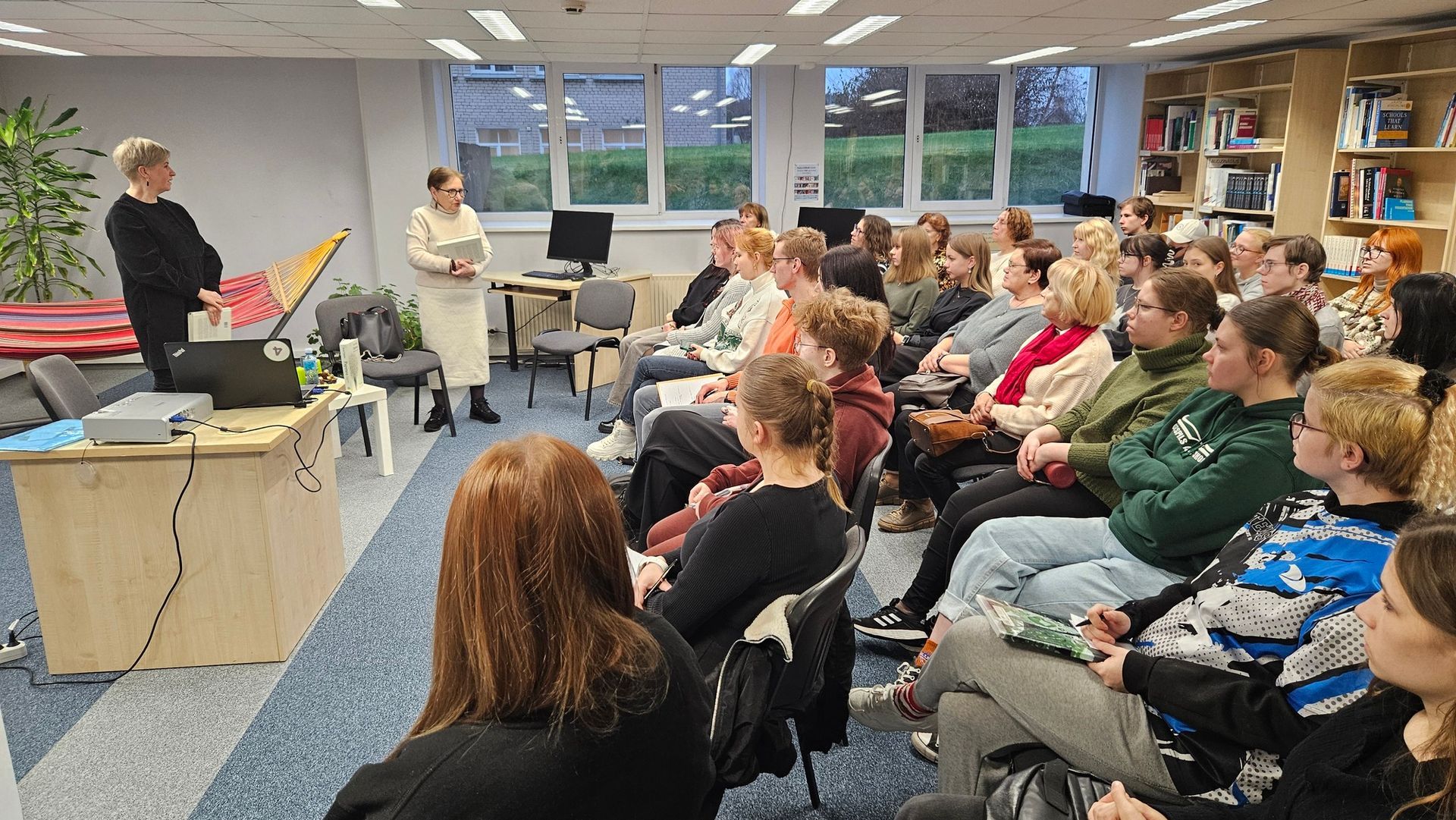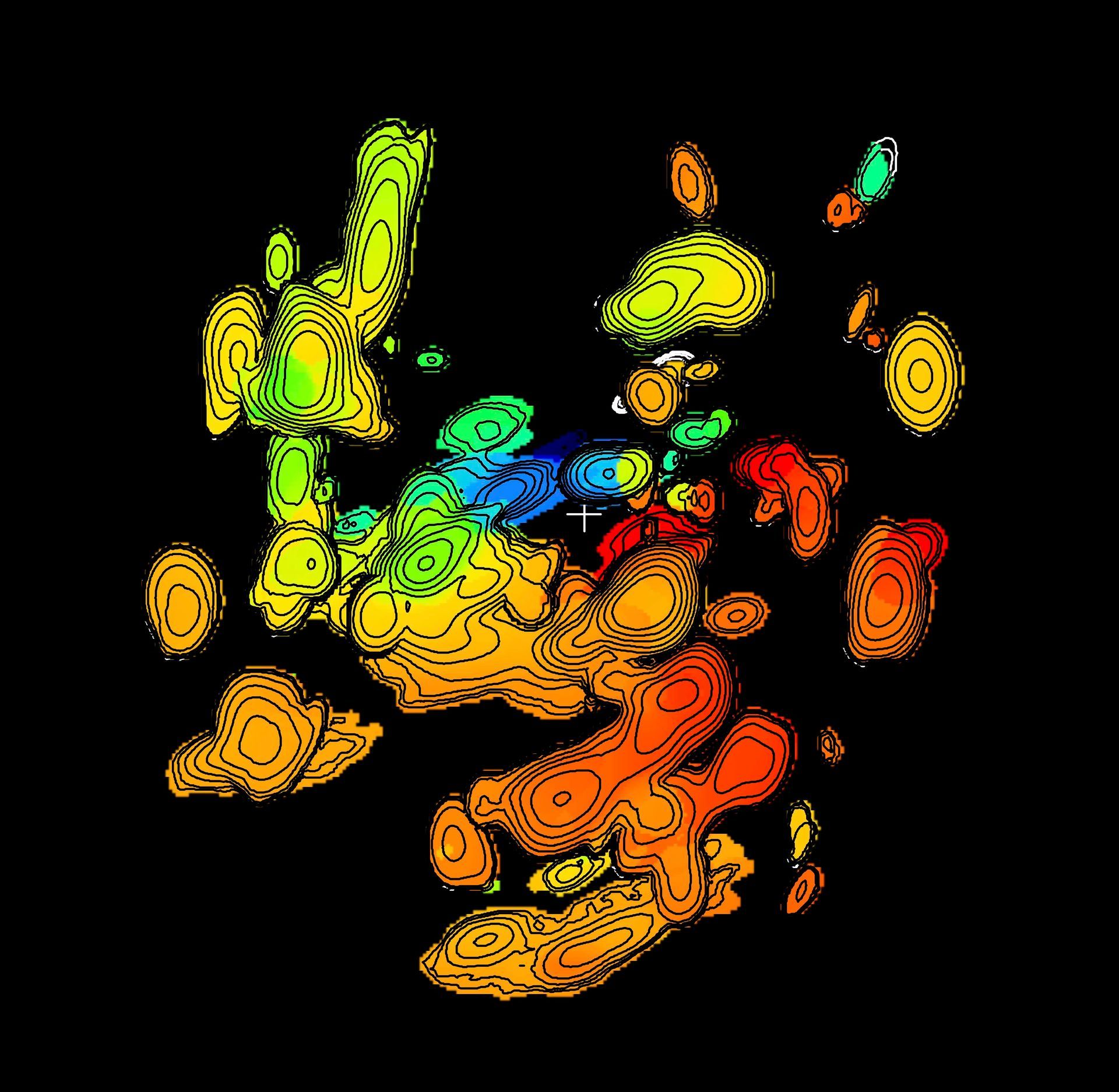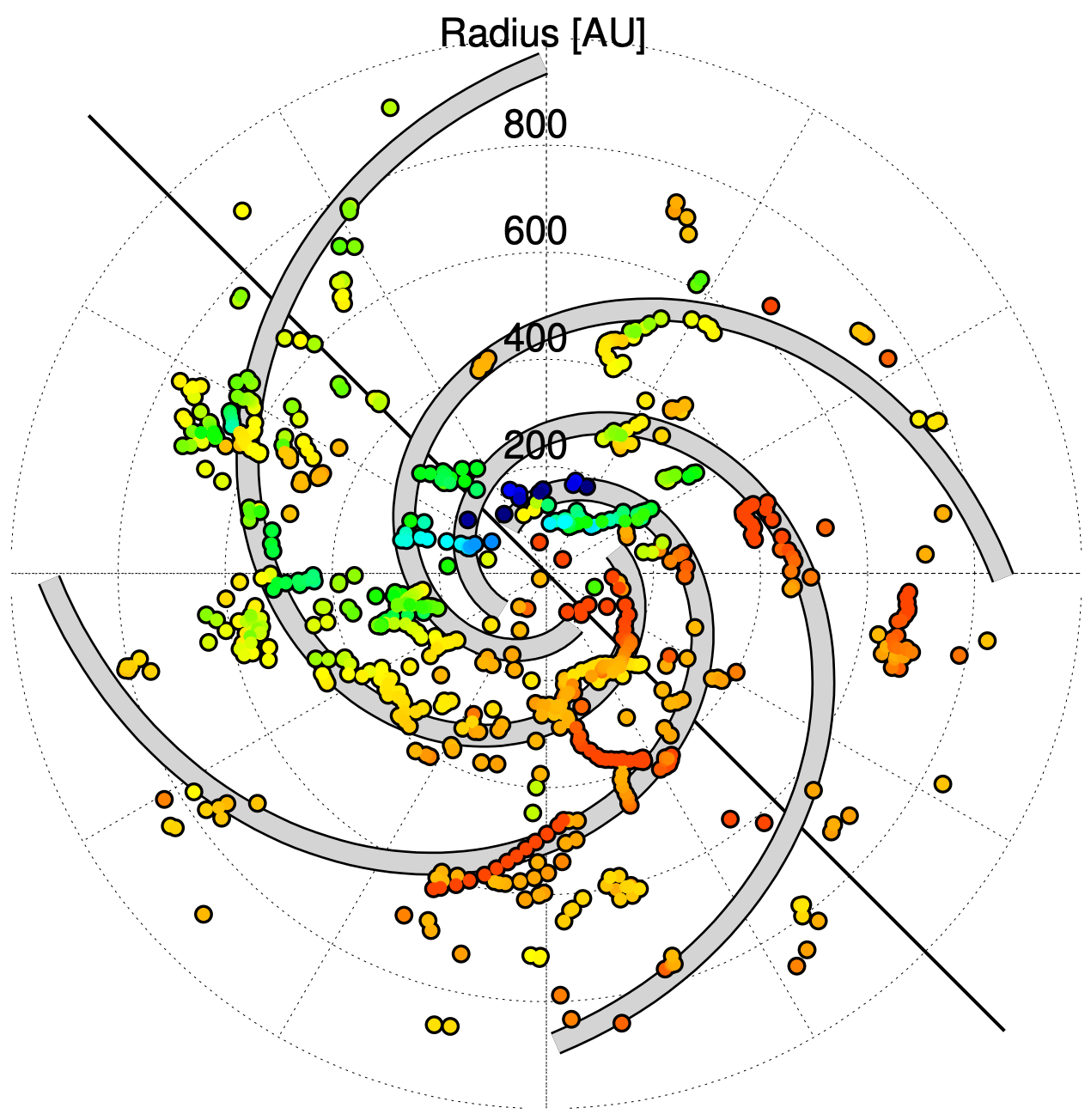Spiral arm high-mass protostellar accretion disk revealed by radio telescopes
Spiral arm high-mass protostellar accretion disk revealed by radio telescopes
High-mass stars are 8 or more times more massive than the Sun. They act like atomic factories to generate many of the necessary building blocks for life and technology in the universe and they alter the appearance and evolution of galaxies. The massive stars “die” spectacularly as supernova explosions, while their brightness overshine the rest of the galaxy.
Despite their importance in the Universe, the process by which high-mass stars are born has been a mystery for many decades. It has recently become known that they form at the hearts of rotating disks of gas and dust, known as protostellar disks, which are ~1000 AU radius (that is, ~1000 times the distance at which the Earth orbits the Sun).
One theory which is emerging as a front runner in high-mass star formation research is the idea of ‘episodic accretion’ where by clumps of dusty gas occasionally fall from the protostellar disk onto the growing star, or ‘protostar’, at the centre. However, these growth bursts occur on timescales of hundreds of years, and, lasting only a few months, and are very rare events to witness. To date, astronomers have only witnessed a three growth bursts in high-mass protostars. The most recent, and the most intensely investigated was the 2019 growth burst in high-mass protostar G358-MM1.
The episodic accretion theory proposes that protostellar disks are clumpy and that spiral arms may emerge in the disk due to it experiencing the pull of its own self-gravity. Observing protostellar disks around high-mass protostars, let alone any spiral structure or clumpiness, has been a challenge for astronomers. Such disks, and their high-mass protostars, form inside dense clouds of gas and dust in turbulent stellar nurseries, which are for the most part invisible to conventional optical telescopes.
However, in a new Nature Astronomy publication https://www.nature.com/articles/s41550-023-01899-w
A team of astronomers who specialize in ‘maser’ emission - which is a microwave wavelength laser - were able to map a high-mass protostellar disk in higher detail than was achieved before. Using Very Long Baseline Interferometry (VLBI) arrays from around the world in an international collaboration, the team were able to discover spiral arms in the rotating disk of high-mass protostar, G358- MM1. This is the very same protostar which was seen to experience a growth burst in 2019.
The team used a new technique called ‘heat-wave mapping’ which used the growth burst’s own flash of radiation to map the surface of the disk using methanol masers. In total, 25 radio telescopes were used, from Ocean, Asia, Europe and America. All data were combined to produce an image of the G358-MM1 spiral disk with milliarcsecond (1/3600000th of a degree) resolution. In everyday terms it is equal to reading a newspaper 8 km away.
The discovery brings together evidence of several of the aspects of episodic accretion theory: a rotating disk, growth bursts, and spiral structure which helps to feed the growing high-mass protostar.
The team will continue to search for growth bursts in high-mass protostars, using a global cooperative of traditional radio telescopes, called the Maser Monitoring Organisation (M2O). So far, only 3 high-mass protostellar bursts have been seen, the team hopes to find many more to explore more growth bursts in other high-mass protostars.
G358-MM1 has four spiral arms which wrap beautifully around the protostar. The spiral arms help to feed disk material down to the centre of the system where it can reach the protostar and feed it.
In this study Ventspils University of Applied Sciences was represented by Ventspils International Radio Astronomy Center (VIRAC) Researcher Artis Aberfelds.
We would like to add that principal investigator of this research Ross Alexander Burns joined VIRAC as Lead-guest researcher starting from January 2023.
Our infrastructure joined this research as part of EVN.
Share on other platforms
Other news










